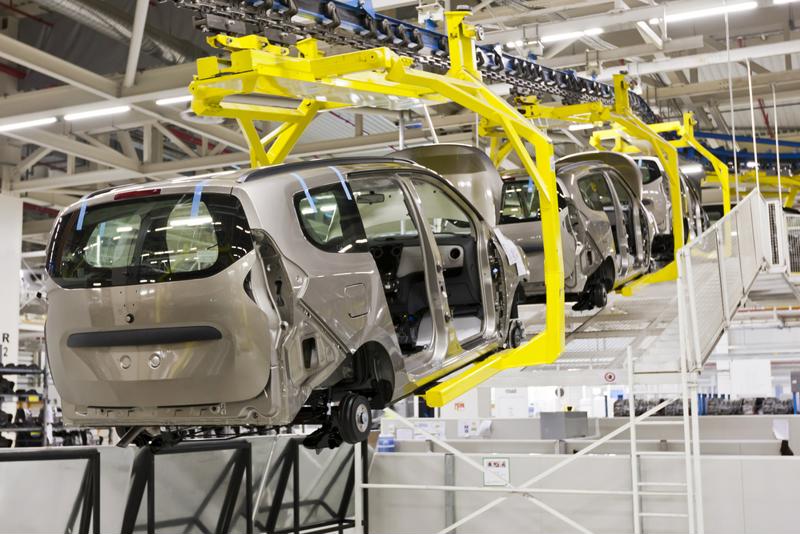Google has been working on its self-driving cars for years now, and the project has just taken a very prominent step forward. The Internet giant’s own autonomous vehicles are currently roaming the streets of California. Google is testing its prototypes in Mountain View to see how they will handle in real-world situations, and how other drivers will adapt to their new road companions. So far, the results have been fairly promising, potentially even revealing the possibility that these vehicles could be safer than those driven by people.
“The prototype cars can only reach 25 mph.”
Are the cars completely driverless?
While the goal of Google’s efforts is to develop a car that does not even need a person present to operate, the developers are not yet ready to let their cars roam free without a little manpower. Each car is equipped with its own “safety driver” who can take over in a moment’s notice. Since the autonomous cars are intended to operate without having any of the traditional controls – steering wheel, gas pedal and brake pedal – Google installed removable equipment for the safety drivers. The cars are also designed to have a maximum speed of 25 mph, ensuring they will be able to navigate suburban streets as safely as possible.
Is Google really building its own cars?
In initial tests, Google has used Lexus models adapted with the technology, but now it is using its own prototype vehicles, which look at once futuristic and retro, that have been full integrated to support the hardware and tech required for them to operate themselves. The Associated Press reported that while Google unveiled the design of the vehicles last year, the company has not set them loose in public roads until now. These small cars, which have a body similar to that of the Fiat 500 but with far more space-age styling, were designed with the technology in mind. They are small and rounded in shape so the sensors are best able to analyze the environment. The cars, which are entirely electric, seat two passengers and have beacon-like protrusions on the front and top of the body where the lasers, cameras and radars have been placed to best sense the surroundings.
Google is even getting people involved in the testing phase. California residents are able to submit their artwork to be incorporated on the doors of the prototypes. Google wants to focus on the theme of “my community, my neighbors,” and will choose the 10 best submissions to feature on the prototypes. The winners will all get to ride in the vehicles as well.
“Onboard sensors can detect and predict what is going on outside the car.”
How do the cars know how to drive?
Google has not created a sentient machine, but rather used a variety of technology to gather and analyze data in real time. Using satellite maps, GPS and a number of on-board sensors, the Google driverless cars are able to navigate roads and find their way from point A to point B without any human assistance. The cars are even able to tell which lane they are in and how far they are from other objects like vehicles, pedestrians and road signs. Not only can the processors determine a vehicle’s surroundings, but they are able to predict possible changes, such as other vehicles changing lanes or stopping short, pedestrians crossing the street or cyclists passing by. If necessary, the cars will make adjustments to avoid incidents, whether they have to change lanes, slow down or swerve.
How have Google’s cars been performing so far?
While it’s still too early to know how the Google cars are doing, Google has had its Lexus test fleet driving the roads for a few years already. The AP stated that these earlier iterations of driverless vehicles have only had 13 minor accidents in the few years they’ve been on the open road. Most importantly, the cause of these crashes was never found to be a result of Google’s technology. Only one of the incidents was found to be caused by a driverless car, and even in that one instance, the safety driver had taken over and was behind the wheel when the incident occurred. With such positive results so far, it’s a good sign that Google is on the right track to bringing autonomous cars to the general public.
“Driverless cars could reach showrooms by 2020.”
When will self-driving cars be available to buy?
Unfortunately, it’s impossible to know exactly how soon automakers will start selling self-driving cars. However, CNET reported that this dream may be a reality in the near future, as Ford and Nissan have claimed this technology could reach showrooms as early as 2020. However, at the rate Google is expanding its testing, the possibility of seeing one of its vehicles on East Coast roads is not that far-fetched.
Drivers who want to be the first to relinquish the title of “driver” in one of these cars can start saving now by finding a used car to get around in the meantime. New Jersey State Auto Auction carries plenty of affordable makes and models to choose from. While older models may not be able to drive themselves, newer used cars may have ultra-modern features like parking assist, lane departure warnings and rearview cameras that can let drivers feel like they’re driving into the future.





 Cars of the future will be safer than ever thanks to technological advancements by automakers.
Cars of the future will be safer than ever thanks to technological advancements by automakers.
 Finalizing financing is just one part of the car buying process.
Finalizing financing is just one part of the car buying process. 
 Young people are using cellphones as a way of finding used cars.
Young people are using cellphones as a way of finding used cars. 




